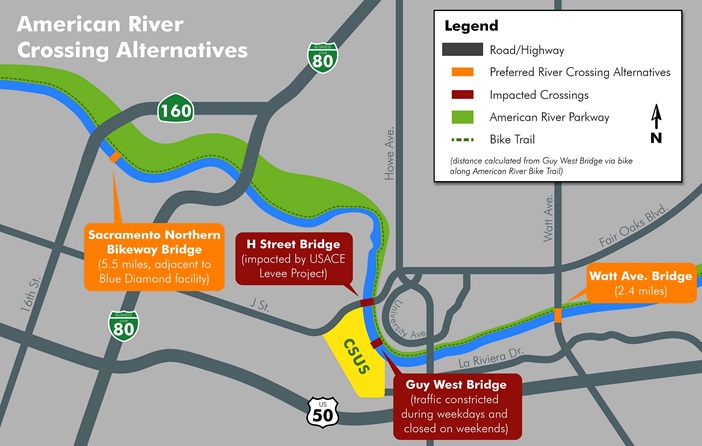The American River Parkway is the crown jewel of Sacramento, a 23-mile stretch of forests, beaches, bike paths and hiking trails used by countless visitors each year.
It is also bone dry, and causing unprecedented headaches for area firefighters this year.
“We’ve had more multi-alarm fires in the last six months than we did in the last two years combined,” Sacramento Fire Department spokesman and firefighter Roberto Padilla said Friday.
Parkway advocates say firefighters have responded to 24 fires – 14 in the city jurisdiction alone – in the first half of the year, including blazes that have erupted from the unusually dry conditions caused by California’s historic drought.
“We’ve noticed a spike in grass fires … and the reason people are noticing is because in the past it would be a 2- or 3-acre fire and then we would get a hold of it,” Padilla said. “Now, you’re talking about 160 acres, like the Cal Expo fire (on July 4).
“The fire behavior is extremely explosive, and the concern for us is these are wildland-type fires in urban settings.”
There is nothing new about grass fires along the parkway. They happen every year – and most are started by humans, either accidentally or as arson. But this year, some area firefighters are particularly concerned about the potential for fires to burn larger and more quickly than in previous years.
So far this year, more than 200 parkway acres have burned, about the same amount that burned over the previous 18 months. With the peak of fire season coming in late August, the situation has left fire officials and parkway advocates debating what methods should be used to reduce the threat of fires, and whether a comprehensive plan should be drawn up to clear out underbrush before it ignites.
The immediate response by firefighters has been to knock down a blaze as rapidly as possible, because of the extreme conditions. Padilla said the Sacramento Fire Department is deploying four firefighters per engine rather than the typical three to make more force available to stop blazes, and the department is deploying additional resources much more quickly than in the past.
In the case of the Cal Expo fire, which burned up to the levee behind the state fairgrounds, the first firefighters dispatched called for additional help before they even arrived because of the size of the smoke column, Padilla said.
“We struck a second alarm before anyone even got there,” he said.
The causes of the fires are the same as in past years – almost invariably they’re caused by humans. The county estimates that the parkway is visited 5 million times a year by parkway users; other estimates put the figure as high as 8 million. With that many visitors, the potential for fire is high, and almost anything can spark a blaze – a campfire set by homeless people, a barbecue set up on an island by weekend visitors, a cigarette butt carelessly discarded.
“There’s just a lot of activity on the parkway,” Padilla said.
More at SacBee.com >>>
Read more here: http://www.sacbee.com/2014/07/19/6568312/american-river-parkway-fires-are.html#storylink=cpy
MMore
Read more here: http://www.sacbee.com/2014/07/19/6568312/american-river-parkway-fires-are.html#storylink=cpy
Read more here: http://www.sacbee.com/2014/07/19/6568312/american-river-parkway-fires-are.html#storylink=cpy

